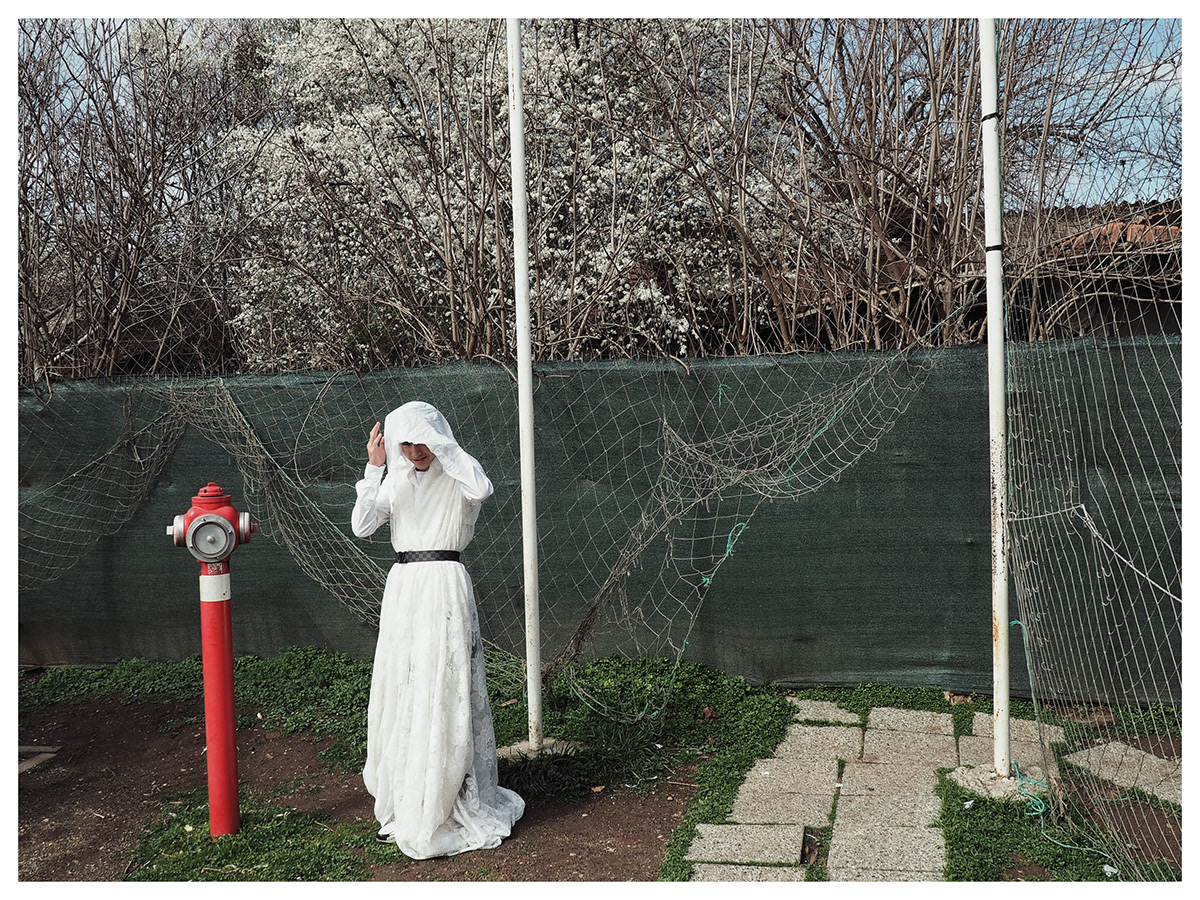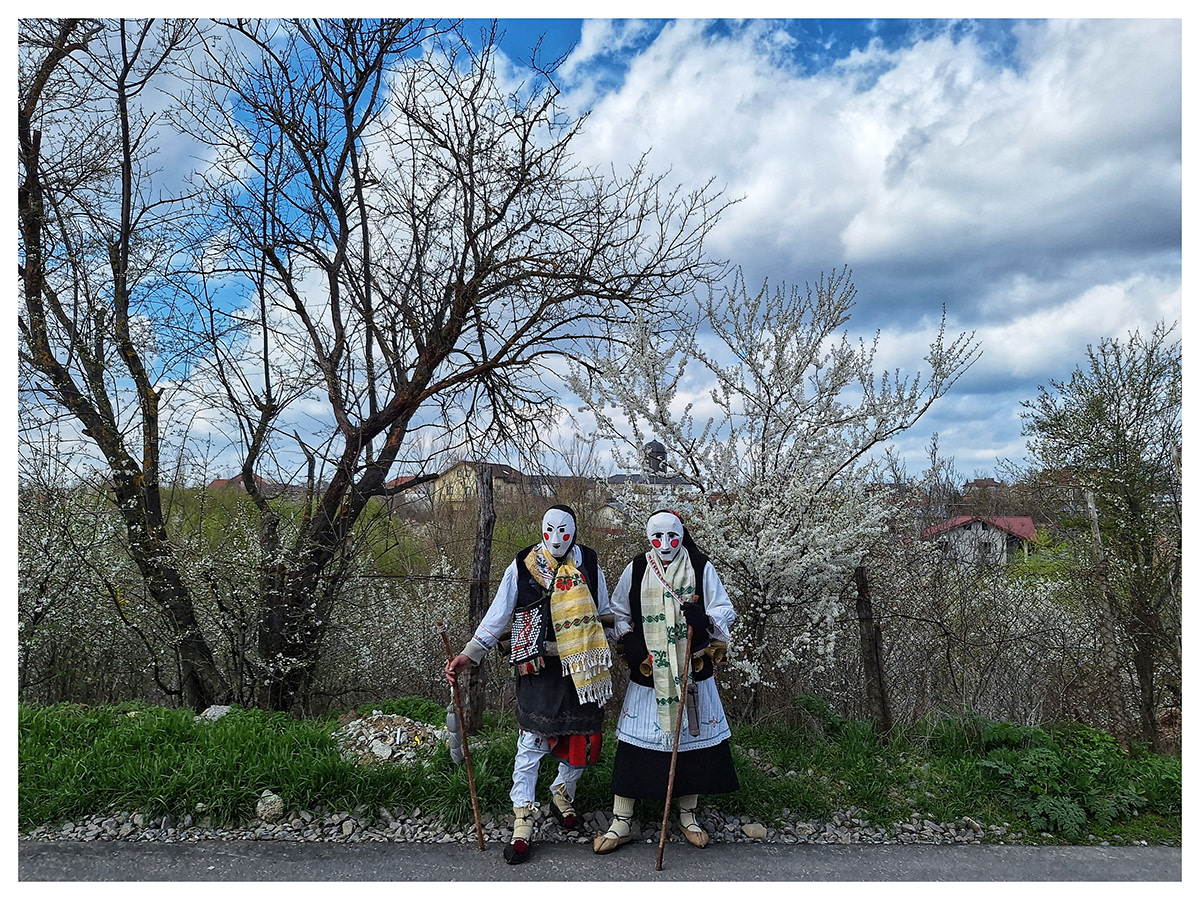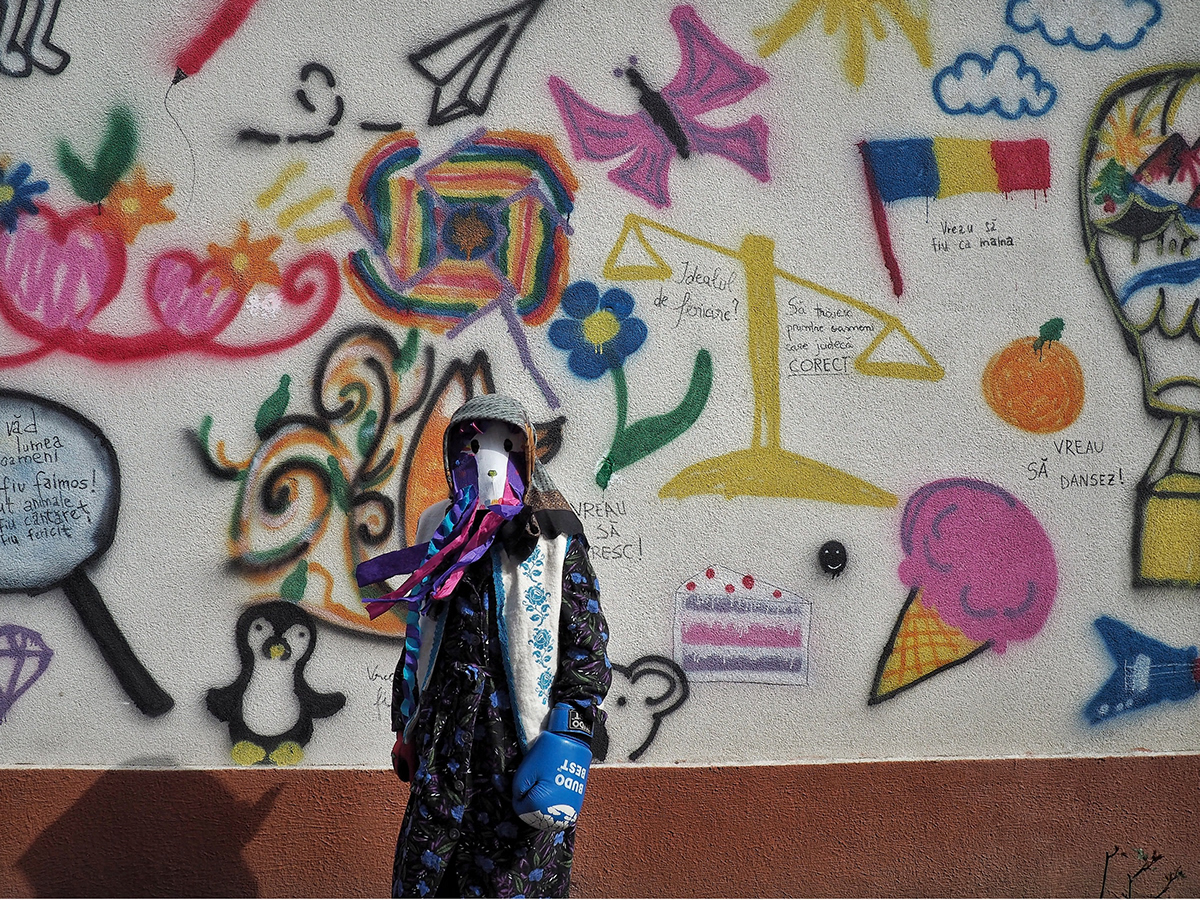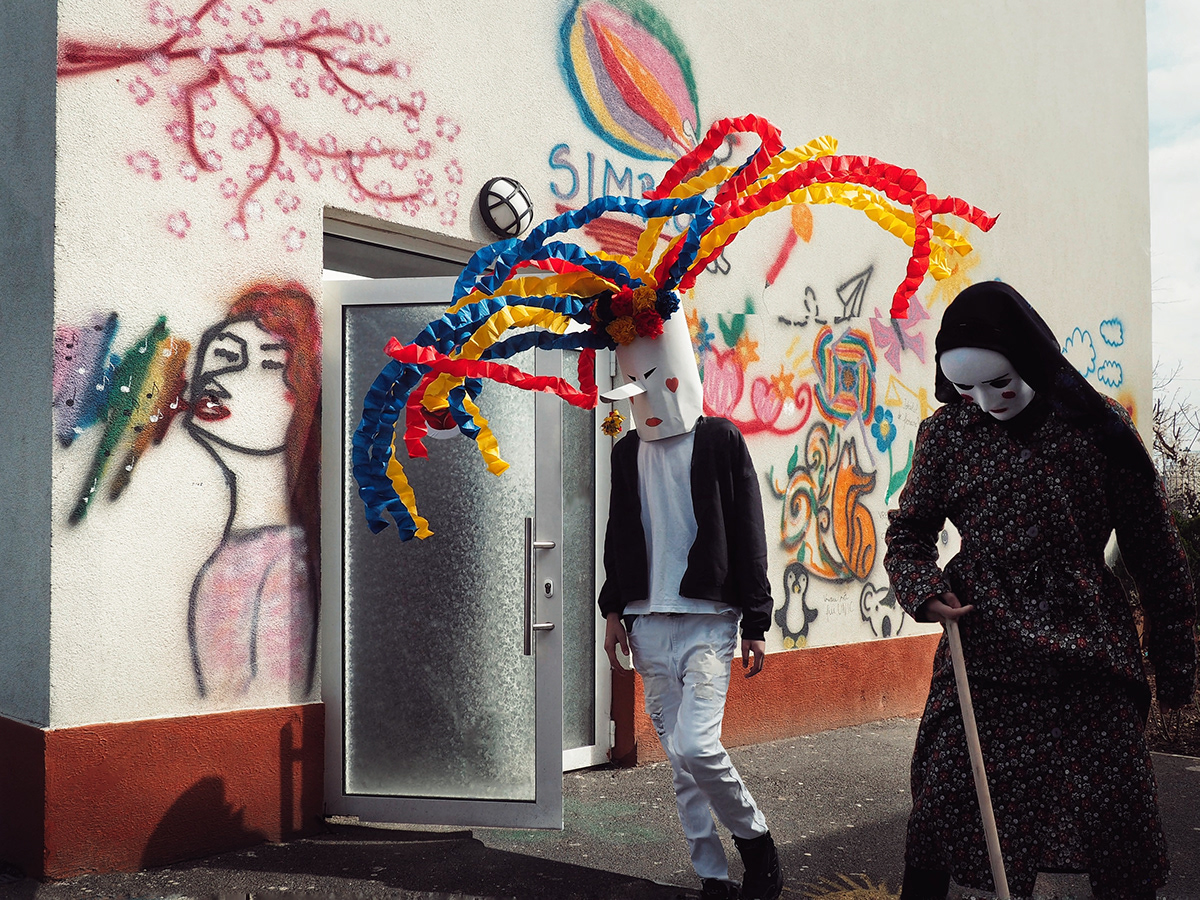











On an apparently ordinary spring day, fifteen minutes away from the crowded Romania's capital Bucharest, in Brăneşti, you can take part in a carnival rooted in the celebrations of Dionysus and in the agrarian traditions of Thrace.
It's a magical Monday, the first following the start of the Easter fasting period, when the "cuckoos" of Brăneşti - the young and eccentric elders of the commune - have the opportunity to play freely in the streets, under the anonymity of their masks. The custom marks the beginning of the new agricultural year and signifies the purification of space and time.
This year, each school and high school organized small parades of the "cuckoos" troops, and in the second part of the day, the locals gathered to celebrate in open space. Participants in costumes enacted funny allegorical scenes symbolizing significant life events: the birth, the marriage, death, and field works, they performed traditional dances, and socialized.
In previous editions, the 'cuckoos' would march through the town in a spectacular procession, but this time car traffic could not be restricted due to the construction works on the highway.
It's almost surreal to suddenly shift from your urban modern dwelling and your usual sterile surroundings, where there's no connection to any pagan ritual, to a place where the community forms a contradictory, colorful and fantastical collective character. A place where every object used in the carnival is ritualistic and is named in an inaccessible, archaic language.
You're across from a construction supplies store, in a commune that otherwise would never have interested you, in a sort of parking lot or space dedicated to the holiday market, with a few cement stalls squeezed into a corner. The place is crowded by ordinary people disguised as extremely unusual characters. To join them, one must first pass by the figure representing death - a sinister doll in a black men's suit, with a hat on its head, lying on the ground in front of a pile of straw in which somebody stuck the flag of the European Union.
The men, the youth, and the children embodying the "cuckoos" wear costumes made up of a mix of traditional garments, pieces from the wardrobe specific to certain everyday professions, but also contemporary fanfiction elements. Between a hunched old woman, wearing a fur coat, a black headscarf, and a broom made of twigs, and a mischievous policeman, who has bells around his ankles, a little Spiderman can appear at any moment.
The centerpiece of the folkloric costume is the mask, referred to as the ''wise". It is made up of a large, heavy dome, adorned with hundreds of brightly colored paper flowers, from which long ribbons emerge, a large nose, from which tassels or bells hang, it has rosy, well-contoured cheeks, and a beard made of rabbit fur, and it is embellished with small mirrors symbolizing the sun and the moon.
Men also dress as women for the carnival. These characters hold a stick and a rope with a leather slipper at the end or a rubber material and, accompanied by the noise made by the belts of bells they wear at their waists, they hit others hard on the back, to have health all year round. In fact, hitting someone on the back during the holiday, either brutally with these props or lightly with the palm, would be a custom born in Brăneşti back when the village, surrounded by marshes, was constantly impacted by malaria.
The community members have long lost understanding of the intricacies of the ancient rituals, but their energy and joy are enough for the magic to happen and for the spectator to be transported into an undefined time. The symbolism includes the revival of nature, fertility, and the banishment of evil spirits, just a few of the meanings conveyed by the gestures and games passed down through generations.
In Brăneşti, the tradition was introduced by Bulgarians who settled in the area starting from the end of the 18th century. Despite nearing extinction, it has seen a resurgence in recent decades, both locally and south of the Danube. Greek groups, Bulgarian "kukers," and Romanian "cuckoos" now join in numerous folklore events and competitions.
Dazzling in its visual impact, characterized by authenticity, imperfections, improvisations, and pure, unadulterated vitality, the Brăneşti "cuckoos" tradition leaves a lasting impression, beckoning visitors back year after year.
It's a magical Monday, the first following the start of the Easter fasting period, when the "cuckoos" of Brăneşti - the young and eccentric elders of the commune - have the opportunity to play freely in the streets, under the anonymity of their masks. The custom marks the beginning of the new agricultural year and signifies the purification of space and time.
This year, each school and high school organized small parades of the "cuckoos" troops, and in the second part of the day, the locals gathered to celebrate in open space. Participants in costumes enacted funny allegorical scenes symbolizing significant life events: the birth, the marriage, death, and field works, they performed traditional dances, and socialized.
In previous editions, the 'cuckoos' would march through the town in a spectacular procession, but this time car traffic could not be restricted due to the construction works on the highway.
It's almost surreal to suddenly shift from your urban modern dwelling and your usual sterile surroundings, where there's no connection to any pagan ritual, to a place where the community forms a contradictory, colorful and fantastical collective character. A place where every object used in the carnival is ritualistic and is named in an inaccessible, archaic language.
You're across from a construction supplies store, in a commune that otherwise would never have interested you, in a sort of parking lot or space dedicated to the holiday market, with a few cement stalls squeezed into a corner. The place is crowded by ordinary people disguised as extremely unusual characters. To join them, one must first pass by the figure representing death - a sinister doll in a black men's suit, with a hat on its head, lying on the ground in front of a pile of straw in which somebody stuck the flag of the European Union.
The men, the youth, and the children embodying the "cuckoos" wear costumes made up of a mix of traditional garments, pieces from the wardrobe specific to certain everyday professions, but also contemporary fanfiction elements. Between a hunched old woman, wearing a fur coat, a black headscarf, and a broom made of twigs, and a mischievous policeman, who has bells around his ankles, a little Spiderman can appear at any moment.
The centerpiece of the folkloric costume is the mask, referred to as the ''wise". It is made up of a large, heavy dome, adorned with hundreds of brightly colored paper flowers, from which long ribbons emerge, a large nose, from which tassels or bells hang, it has rosy, well-contoured cheeks, and a beard made of rabbit fur, and it is embellished with small mirrors symbolizing the sun and the moon.
Men also dress as women for the carnival. These characters hold a stick and a rope with a leather slipper at the end or a rubber material and, accompanied by the noise made by the belts of bells they wear at their waists, they hit others hard on the back, to have health all year round. In fact, hitting someone on the back during the holiday, either brutally with these props or lightly with the palm, would be a custom born in Brăneşti back when the village, surrounded by marshes, was constantly impacted by malaria.
The community members have long lost understanding of the intricacies of the ancient rituals, but their energy and joy are enough for the magic to happen and for the spectator to be transported into an undefined time. The symbolism includes the revival of nature, fertility, and the banishment of evil spirits, just a few of the meanings conveyed by the gestures and games passed down through generations.
In Brăneşti, the tradition was introduced by Bulgarians who settled in the area starting from the end of the 18th century. Despite nearing extinction, it has seen a resurgence in recent decades, both locally and south of the Danube. Greek groups, Bulgarian "kukers," and Romanian "cuckoos" now join in numerous folklore events and competitions.
Dazzling in its visual impact, characterized by authenticity, imperfections, improvisations, and pure, unadulterated vitality, the Brăneşti "cuckoos" tradition leaves a lasting impression, beckoning visitors back year after year.

